Museu Nacional d'Art de Catalunya
Atop Montjuïc hill this museum offers a vast collection of Catalan art spanning a millennium.


Perched atop Montjuïc hill, the Museu Nacional d'Art de Catalunya (MNAC) is a treasure trove of artistic masterpieces and an essential destination for art enthusiasts visiting Barcelona. The museum's vast collection spans over a thousand years, providing a unique insight into the artistic and cultural heritage of Catalonia. In this guide, we will delve into the museum's history, its expansive collections, visitor information, and nearby attractions, ensuring that your visit to the Museu Nacional d'Art de Catalunya is both enriching and unforgettable.
History
The Palau Nacional, an awe-inspiring building that houses the MNAC, was constructed for the 1929 International Exhibition. The museum itself was officially founded in 1990 when the former Museu d'Art de Catalunya and the Museu d'Art Modern merged. Over the years, the museum's impressive collection has grown exponentially, solidifying the MNAC's reputation as one of Spain's foremost art institutions and a hub for the study and appreciation of Catalan art.
Collections
The MNAC's extensive collection covers a wide range of artistic periods and styles, from Romanesque art to mid-20th-century masterpieces. The museum's collections are divided into five main sections, each offering a unique perspective on the evolution of Catalan art:
Romanesque Art
This exceptional collection features frescoes, wooden sculptures, and metalwork dating back to the 11th through the 13th centuries. The museum's most prized possessions include the extraordinary frescoes from churches in the Pyrenees, which were carefully removed and transported to Barcelona to protect them from deterioration and vandalism.
Gothic Art
Showcasing Catalan Gothic art from the 13th to the 15th century, this section focuses on painting and sculpture. The collection boasts works by renowned artists such as Jaume Huguet, Lluís Dalmau, and Bernat Martorell.
Renaissance and Baroque Art
Encompassing the 16th to the 18th century, this collection highlights the artistic developments in Catalonia during the Renaissance and Baroque periods. Notable artists featured in this section include El Greco, Zurbarán, and Velázquez, as well as Catalan painters such as Pere Serra and Antoni Viladomat.
Modern Art
The MNAC's modern art collection showcases works from the 19th and 20th centuries, highlighting the diverse artistic styles that emerged during these times. From Romanticism to Surrealism, this section features prominent Catalan artists such as Ramon Casas, Santiago Rusiñol, Joaquim Mir, and Salvador Dalí, among others.
Photography
The MNAC's photography collection focuses on the evolution of photographic techniques and the role of photography in documenting Catalonia's history and culture. The collection includes works by influential photographers like Pau Audouard, Agustí Centelles, and Joaquim Gomis.
Numismatics
The museum also houses a vast numismatic collection, which includes coins, medals, and paper money. The collection traces the history of money in Catalonia from ancient times to the present day.
Prints and Drawings
This section consists of an extensive collection of drawings, prints, and posters, illustrating the development of graphic arts in Catalonia.
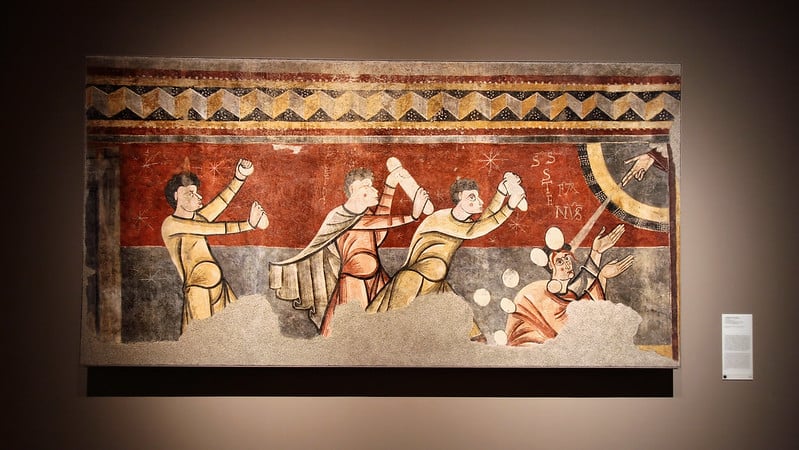
By Jorge Franganillo, licensed under CC BY 2.0
Visitor Information
The MNAC is open from Tuesday to Sunday, with hours varying depending on the season. Admission prices range from €12 for general admission to €15 for a combined ticket that includes access to the temporary exhibitions. Free admission is available on Saturdays from 3 pm, the first Sunday of each month, and on select public holidays. Audio guides and guided tours are available in multiple languages to enhance your museum experience.
The museum is easily accessible by public transportation, with the closest metro stations being Espanya (Lines 1 and 3) and Poble Sec (Line 3). Alternatively, several bus lines serve the area, and the Montjuïc funicular connects the museum to the city centre.
Nearby Attractions
The MNAC's prime location on Montjuïc hill makes it an excellent starting point for exploring other nearby attractions. Some popular sights in the vicinity include:
Magic Fountain of Montjuïc
Located just a short walk from the museum, this impressive fountain offers captivating light and music shows that are not to be missed, especially during the evening.
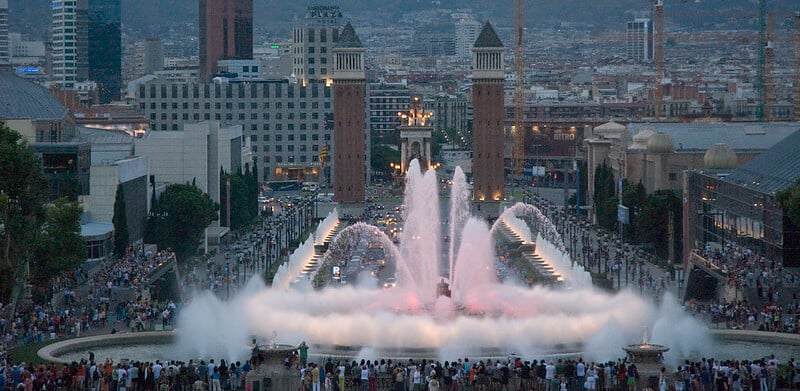
By Felipe Ortega, licensed under CC BY-SA 2.0
Fundació Joan Miró
This modern art museum is dedicated to the life and work of Catalan artist Joan Miró, featuring a comprehensive collection of his paintings, sculptures, and ceramics, as well as temporary exhibitions showcasing contemporary art.
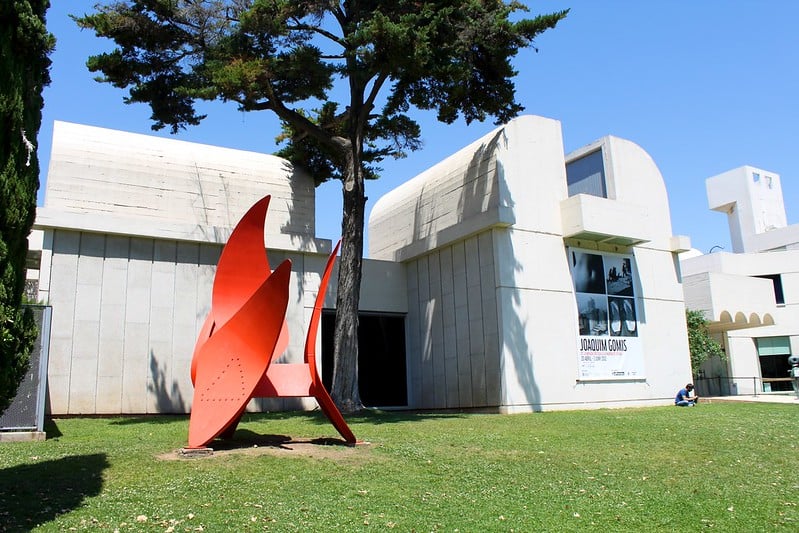
By Alexander Johmann, licensed under CC BY-SA 2.0
Poble Espanyol
This open-air architectural museum replicates the diverse architectural styles found across Spain, offering an immersive experience of Spanish culture, art, and cuisine. With numerous shops, restaurants, and workshops, Poble Espanyol is an ideal destination for families.
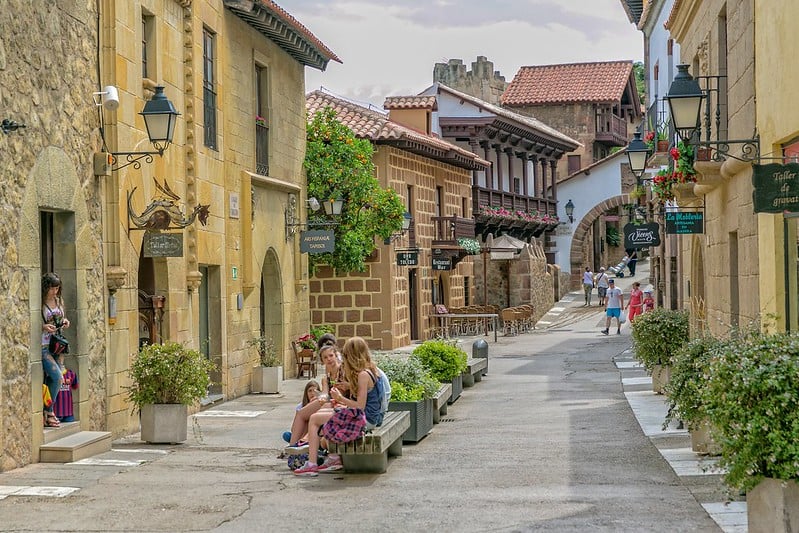
By Dmitry Karyshev, licensed under CC BY 2.0
Montjuïc Castle
Perched atop the hill, this 17th-century fortress boasts stunning views of the city and the harbour. The castle also hosts various events and exhibitions throughout the year, making it a popular spot for cultural activities.
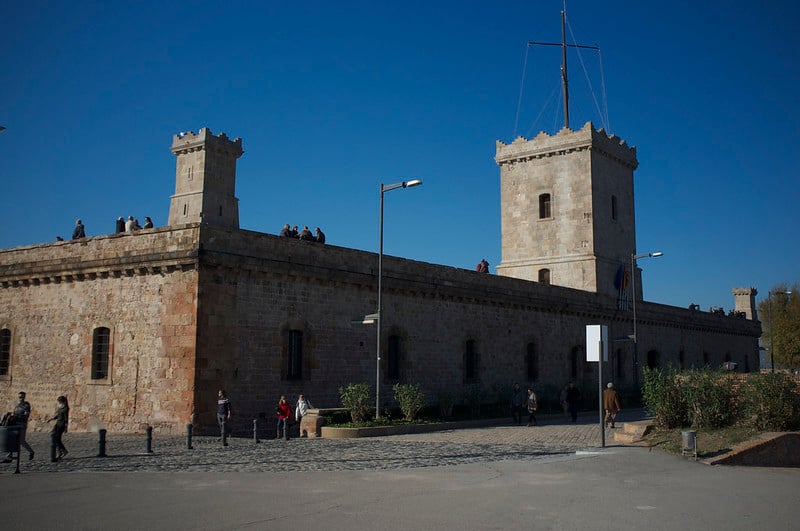
By Aleksandr Zykov, licensed under CC BY-SA 2.0
Olympic Stadium
Built for the 1929 International Exhibition and later refurbished for the 1992 Summer Olympics, the stadium holds a significant place in Barcelona's history and offers guided tours for sports enthusiasts.
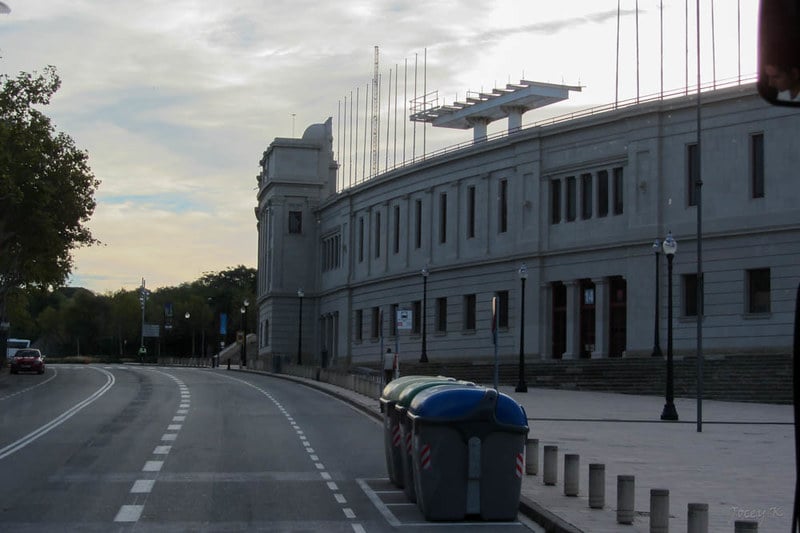
By Jocelyn Kinghorn, licensed under CC BY-SA 2.0
Montjuïc Cable Car
To fully appreciate the beauty of Montjuïc, take a ride on the cable car, which offers breathtaking panoramic views of Barcelona and the surrounding area. The cable car connects Montjuïc Park with the city centre, making it a convenient way to explore this picturesque part of Barcelona.
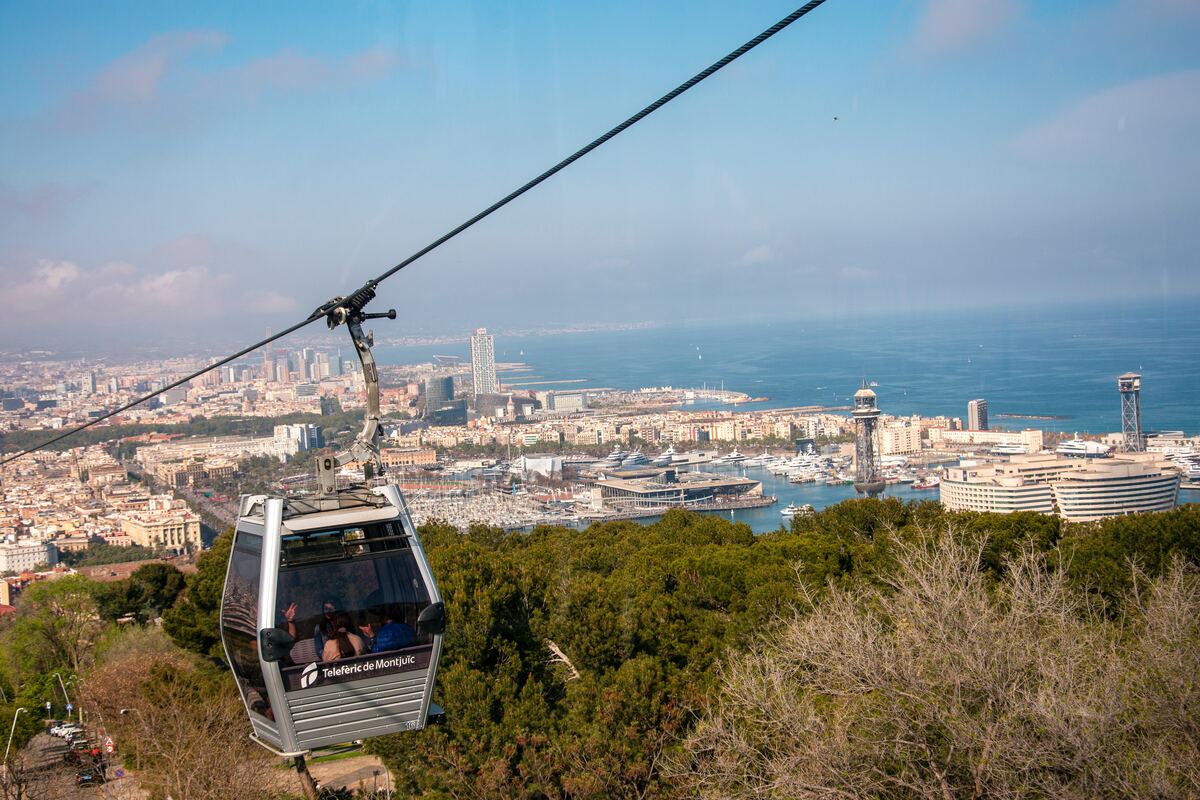
Tips for Visiting
Allocate at least 2 to 4 hours for your visit to fully explore the museum's extensive collection. If you're particularly interested in a specific period or style of art, plan accordingly to ensure you have enough time to appreciate your favorite pieces.
Take advantage of the free admission opportunities on Saturdays from 3 pm, the first Sunday of each month, and select public holidays to save on admission costs.
Wear comfortable shoes, as the museum covers a large area with multiple levels to explore. The museum is wheelchair accessible, with lifts and ramps available for visitors with mobility impairments.
Make use of the audio guides or join a guided tour to gain a deeper understanding of the artworks and their historical context. These resources can greatly enhance your appreciation of the museum's collection.
Combine your visit to the MNAC with other nearby attractions on Montjuïc hill to make the most of your time in the area. Montjuïc is home to several other museums, parks, and cultural sites that are well worth exploring.
The Museu Nacional d'Art de Catalunya is a unique and invaluable resource for those seeking to delve into the rich artistic heritage of Catalonia. With its extensive collection spanning over a thousand years, the museum provides a comprehensive overview of the region's artistic evolution and the exceptional talents that have shaped its cultural identity.
Whether you're an art aficionado or simply looking to immerse yourself in the local culture, a visit to the MNAC is sure to leave a lasting impression. As you explore the diverse collections and take in the breathtaking views of Barcelona from Montjuïc hill, you'll gain a deeper appreciation for the city's vibrant artistic legacy and the remarkable contributions of its artists to the world of art.

In addition to its stunning collections, the MNAC's location on Montjuïc hill allows visitors to enjoy the natural beauty and other cultural attractions in the area. With a visit to the Museu Nacional d'Art de Catalunya, you'll not only be treated to an unforgettable journey through Catalan art history but also an opportunity to create lasting memories in one of Barcelona's most picturesque and culturally rich neighbourhoods.
Whether you're a first-time visitor or a seasoned traveler to Barcelona, the MNAC is a must-visit destination that offers a wealth of artistic treasures and a deeper understanding of Catalonia's unique cultural heritage. So, plan your visit, grab your camera, and prepare to be amazed by the beauty and history that await you at the Museu Nacional d'Art de Catalunya.



